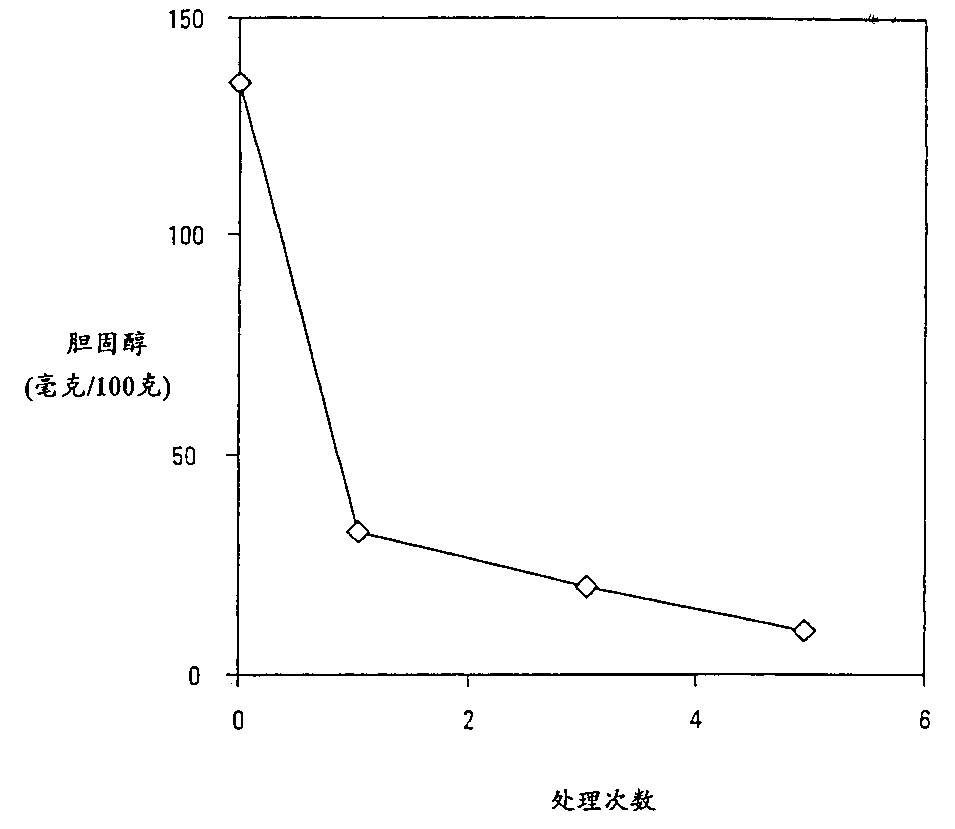Phospholipid-based removal method of sterols from fats and oil
A technology of sterols and phospholipids, which is applied in the field of oil extraction under high vacuum, can solve the problems of increasing the cost of waste, and achieve the effects of reducing deterioration, improving the value of nutraceuticals, reducing costs and the possibility of thermal deterioration of products
- Summary
- Abstract
- Description
- Claims
- Application Information
AI Technical Summary
Problems solved by technology
Method used
Image
Examples
Embodiment 1
[0052] Add different proportions of distilled water and soybean lecithin (Lipotin A / UB, SR `19697 / 1, available from Lucas Meyer, Decatur, IL). The samples were stirred vigorously with a magnetic stirrer for 1 hour at ambient temperature, and then centrifuged at 3000 rpm (approximately 1000 xg) for 10 minutes in a benchtop centrifuge (IEC Clinical Centrifuge).
[0053] After centrifugation, the upper lipid layer was collected and analyzed for cholesterol content by gas chromatography. Oil samples were processed only once. This allowed the determination of the maximum amount of cholesterol removed in a single-step process under different conditions. The results are shown in Table 1 below:
[0054] Table 1
[0055] Removal of Cholesterol Samples from Oils and Fats in One Step Cholesterol * Lecithin: Water Lecithin: Fat Cholesterol No. mg / 100g Weight Ratio Weight Ratio Percentage 1 121.8 Control Control Control
[0056] 2 59.3 1:1 1...
Embodiment 2
[0063] In the second experiment, an appropriate amount of distilled water was added to the same commercial soybean lecithin used in Example 1, and then heated to 60°C. The mixture was homogenized with a mechanical stirrer (Caframo model RZR1) for 15 minutes to form a slurry of lecithin and water. The remaining steps were performed at ambient temperature. Add the weighed lecithin-water paste into different amounts of the same type of liquid tallow used in Example 1, and mix thoroughly with a high-speed shear mixer for 10 minutes. Samples were then centrifuged at 10000 rpm (approximately 11400 xg) for 10 minutes in a Beckman J-21C floor-standing centrifuge. Separate the oily phase from the centrifuge bottle. The steps of contacting the once treated oil with the lecithin-water slurry, mixing, centrifuging and separating are repeated as many times as desired. Fresh lecithin-water paste was used for each repetition. The resulting cholesterol-depleted oil was then subjected to c...
Embodiment 3
[0070] In the third set of experiments, phosphatidylcholine derived from egg yolk (Sigma Chemical Co., St. Louis, MO; No. P-9671; phosphatidylcholine content about 60%) was used as a source of phospholipids. A slurry of phosphatidylcholine and water was prepared by mixing water and phosphatidylcholine in a weight ratio of 2:1 with a mechanical stirrer. The phosphatidylcholine used in this experiment contained only trace amounts of oil, whereas the soybean lecithin used in the previous examples contained about 50% by weight of oil. Thus, the phospholipid content of the 2:1 water to phosphatidylcholine slurry was approximately equal to the phospholipid content of the 1:1 water:lecithin slurry used in the previous examples. Liquid fats and oils (same type as in Examples 1 and 2) were treated with phosphatidylcholine-water paste with a ratio of phosphatidylcholine to fat of 1:20 to 1:10. The paste and fat were stirred rapidly with a mechanical stirrer for 30 minutes at ambient te...
PUM
 Login to View More
Login to View More Abstract
Description
Claims
Application Information
 Login to View More
Login to View More - R&D
- Intellectual Property
- Life Sciences
- Materials
- Tech Scout
- Unparalleled Data Quality
- Higher Quality Content
- 60% Fewer Hallucinations
Browse by: Latest US Patents, China's latest patents, Technical Efficacy Thesaurus, Application Domain, Technology Topic, Popular Technical Reports.
© 2025 PatSnap. All rights reserved.Legal|Privacy policy|Modern Slavery Act Transparency Statement|Sitemap|About US| Contact US: help@patsnap.com


